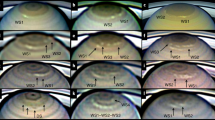Abstract
A tropical squall line that passed over the ship array of the Global Atmospheric Research Programme's Atlantic Tropical Experiment (GATE) on 9-10 August 1974 is analyzed. This squall line was similar to squall systems that passed over the GATE ship array on four other days. It began as a purely convective cloud line, then developed an associated stratiform cloud and precipitation area. The stratiform rain built up to a maximum amount over a period of 8 h, then gradually diminished over a 6 h period. This stratiform rain is estimated to have accounted for 32% of the squall system's total precipitation. As in other GATE squall lines, the upper-level cloud shield from which the stratiform rain fell, was advected slowly forward of the line during the system's lifetime, the leading line of convective clouds consisted of transient smaller-scale convective elements, which lent the line an irregular shape and pulsatory movement, and the stratiform portion of the system was characterized by the development of a mid-level mesoscale vortex similar to that seen in other GATE cases.
Similar content being viewed by others
References
Churchill, D.D., and Houze, R.A. (1984), Mesoscale updraft magnitude and cloud-ice content deduced from the ice budget of the stratiform region of a tropical cloud cluster,J. Atmos. Sci.,41:1717–1725.
Fitzjarrald, D.R., and Garstang, M. (1981a), Vertical structure of the tropical boundary layer,Mon. Wea. Rev.,109:1512–1526.
Fitzjarrald, D.R., and Garstang, M. (1981b), Boundary layer growth over the tropical ocean,Mon. Wea. Rev.,109:1762–1772.
Gamache, J.F., and Houze, R.A. Jr. (1982), Mesoscale air motions associated with a tropical squall line,Mon. Wea. Rev.,110:118–135.
Gamache, J.F., and Houze, R.A. Jr. (1983), Water budget of a mesoscale convective system in the tropics,J. Atmos. Sci.,40:1835–1850.
Gamache, J.F., and Houze, R.A. Jr. (1985), Further analysis of the composite wind and thermodynamic structure of the 12 September GATE squall line,Mon. Wea. Rev.,113:1241–1259.
Hamilton, R.A., and Archbold, J.N. (1945), Meteorology of Nigeria and adjacent territory;Quart. J. Roy. Meteor. Soc.,71:231–262.
Houze, R.A., Jr. (1977), Structure and dynamics of a tropical squall-line system,Mon. Wea. Rev.,105:1540–1567.
Houze, R.A., Jr., and Rappaport, E.N. (1984), Air motions and precipitation structure of an early summer squall line over the eastern tropical Atlantic,J. Atmos. Sci.,41:553–574.
Hudlow, M.D. et al. (1979), Calibration and intercomparison of the GATE C-band weather radars. Tech. Rep. ED1S 31, National Oceanic and Atmospheric Administration, Rockville, Maryland, 98pp. [NT1S PB8120305].
Johnson, R.H., and Nicholls, M.E. (1983), A composite analysis of the boundary layer accompanying a tropical squall line,Mon. Wea. Rev.,111: 308–319.
Leary, C.A., (1984), Precipitation structure of the cloud clusters in a tropical easterly wave,Mon. Wea. Rev.,112:313–325.
Leary, C.A., and Houze, R.A. Jr (1979), Melting and evaporation of hydrometeors in precipitation from the anvil clouds of deep tropical convection,J. Atmos. Sci.,36:669–679.
LeMone, M.A., and Zipser, E.J. (1980), Cumulonimbus vertical velocity events in GATE. Part I: Diameter, intensity and mass flux,J. Atmos. Sci.,37:2444–2457.
Reeves, R.W., (1978), GATE Convection Subprogram Data Center: Final Report on Rawinsonde Data Validation. NOAA Tech. Rep. EDS 29. Center for Experimental Design on Data Analysis. National Oceanic and Atmospheric Administration, Rockville, Maryland, 31 pp. [NTIS PB-281-887).
Smith, E.A., et al. (1979), GATE satellite surface radiation archives; Tech. Rep., Dept. of Atmos. Sci., Colorado State University, 210 pp.
Zipser, E.J. (1969), The role of organized unsaturated convective downdrafts in the structure and rapid decay of an equatorial disturbance.J. Appl. Meteor.,8: 799–814.
Zipser, E.J. (1977), Mesoscale and convective-scale downdrafts as distinct components of squall-line circulation,Mon. Wea. Rev.,105: 1568–1589.
Zipser, E.J., and LeMone, M.A. (1980), Cumulonimbus vertical velocity events in GATE. Part II: Synthesis and model core structure.J. Atmos. Sci.,37:2458–2469.
Author information
Authors and Affiliations
Rights and permissions
About this article
Cite this article
Tongjian, W., Houze, R.A. The GATE squall line of 9-10 August 1974. Adv. Atmos. Sci. 4, 85–92 (1987). https://doi.org/10.1007/BF02656664
Received:
Issue Date:
DOI: https://doi.org/10.1007/BF02656664




